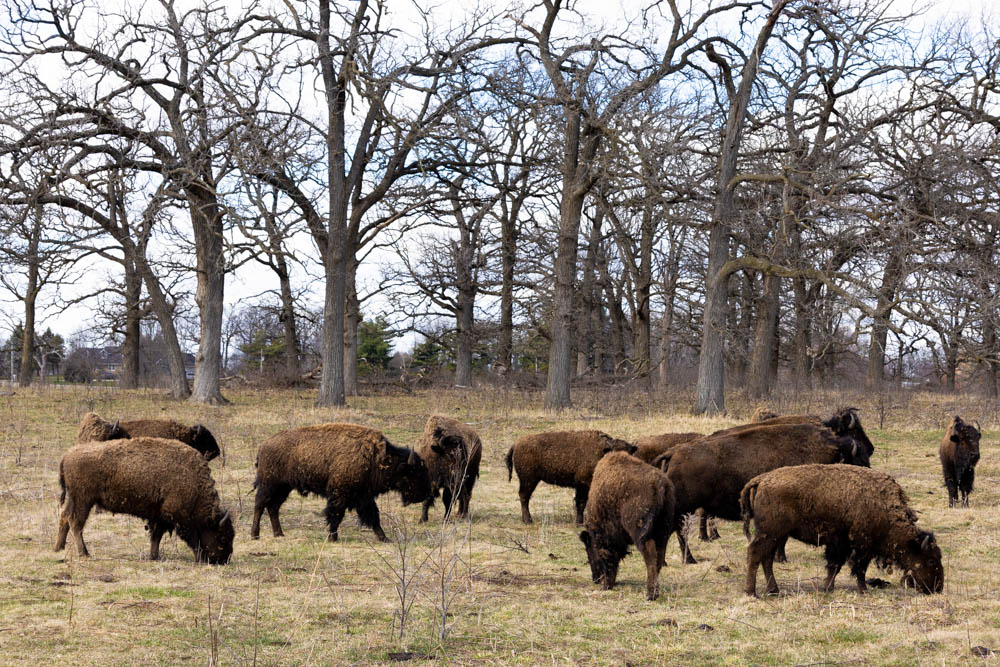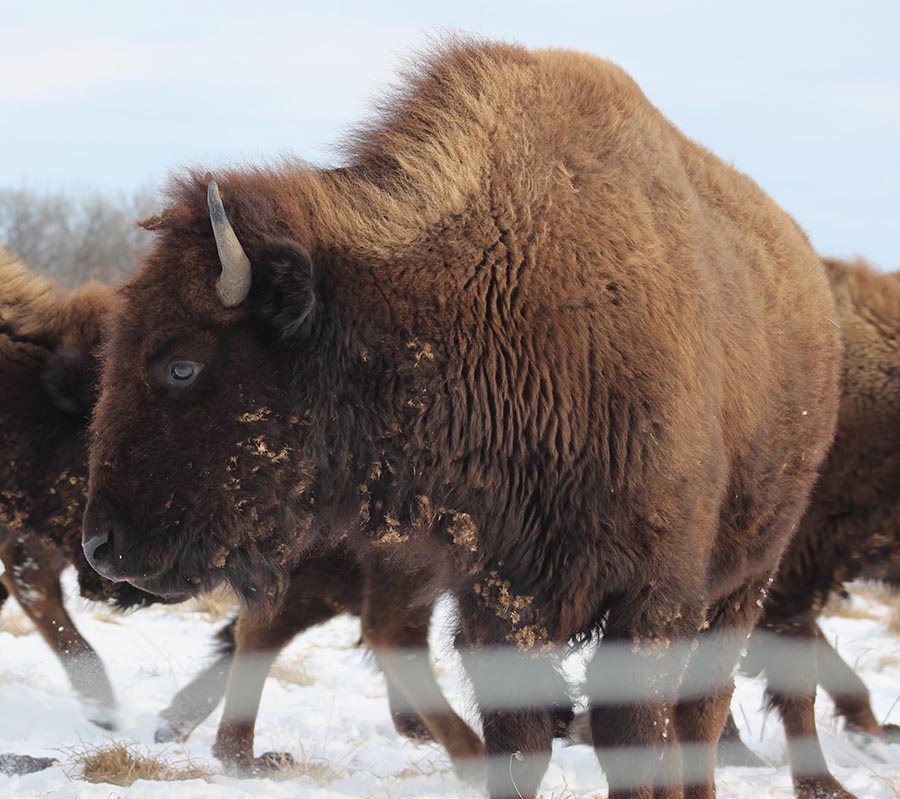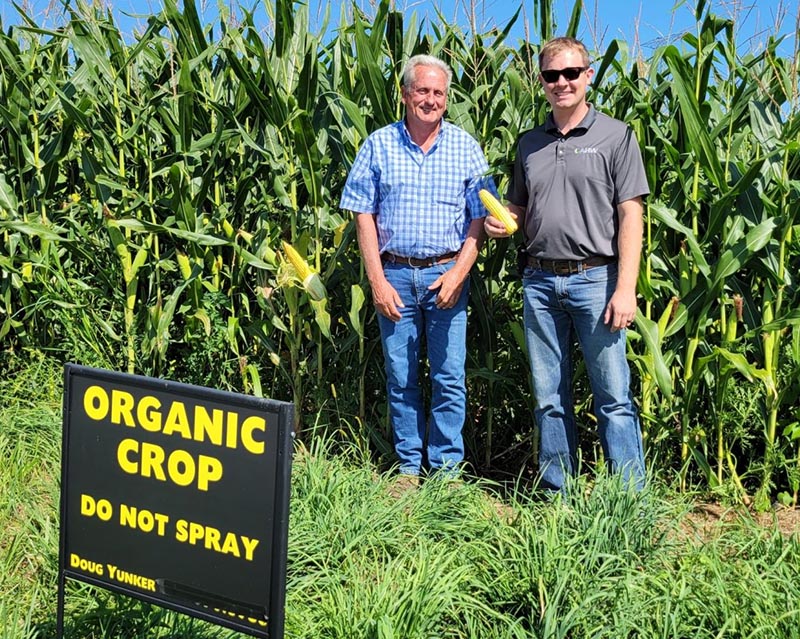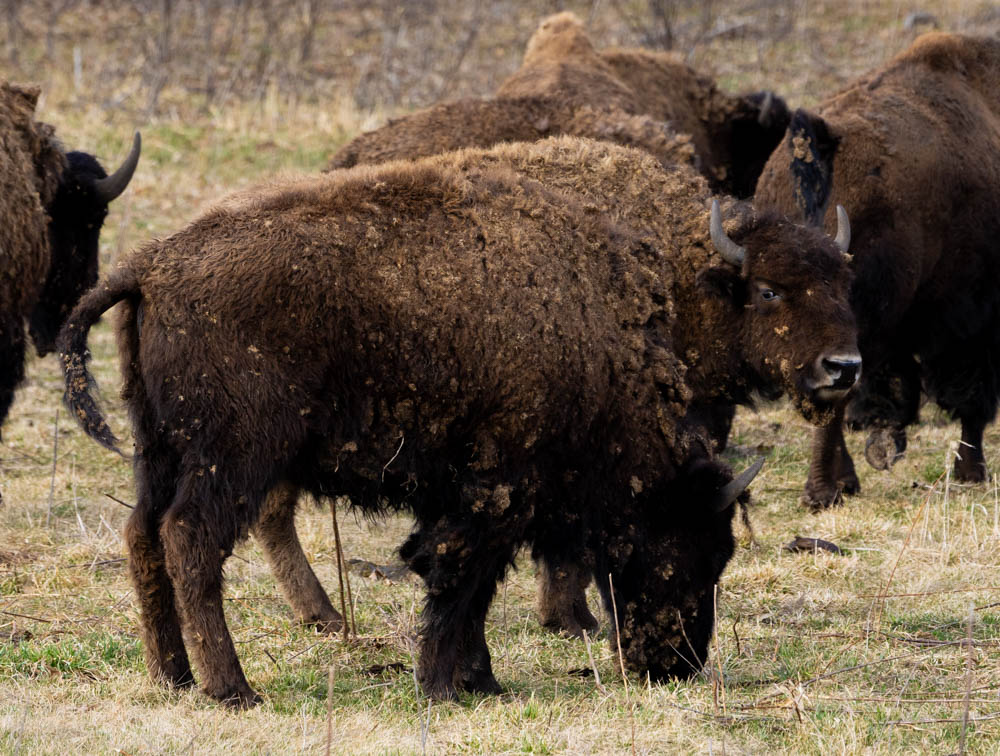
Consumer interest in where food comes from is accelerating a long-overdue meeting of the minds between conservationists, environmentalists, and farmers. Public landowners are helping by viewing their farm leases as “demonstration projects” to encourage adoption of agriculture practices that prioritize soil restoration and ecosystem health.
That was Ed Collins’ message in a recent webinar. Collins is Director of Land Preservation and Natural Resources for Northeastern Illinois’ McHenry County Conservation District.
The county agency is one of 11 Midwest public and private institutions that took part in this survey. “Managing Organizational Farmland for Conservation” was produced by Liberty Prairie Foundation—a Lake County land trust that manages 94 acres of organic agriculture, perennial crops, and wild spaces. Survey participants manage more than 100,000 acres of farmland.
“All of these pioneering perennial agriculture operations are radiating inspiration and expertise beyond their property lines to other farmers, public landowners, and private landowners,” writes Nathan Aaberg, the Foundation’s director of conservation and working lands. Partnership approaches vary, yet one recurring theme appears to be the need for long-term leasing arrangements with farm tenants.
McHenry County, for example, owns more than 5,700 acres of land that’s in agricultural production. Row crop growers have six-year leases. A bison operation has a 15-year lease.
Collins offers these four takeaways:
• Conservationists and environmentalists need to “rethink” how they achieve their goals,
• Habitat conservation is “doomed” unless pursued in regenerative agriculture framework,
• This new strategic direction will benefit from “fundamental” societal change as consumers become more educated about food production and where it comes from,
• Climate change is an “unstoppable force” requiring agriculture adaptation – from corn to carrots to cows.
Collins cited his own farm as an example of how change will happen. He has a small hay field that a McHenry County farmer mows. The farmer wanted to cut hay in early spring, but Collins insisted on holding off until July for the benefit of nesting birds.
“We went back and forth from a place of mutual respect,” Collins explained. “As a farmer, he was interested in cutting the hay when it had more value. As a biologist, I was willing to take less money for the benefit of preserving bird habitat. And, as the landowner, he had to follow my guidelines.”
Collins describes this personal experience to speak to a bigger picture where “neither side is able to see the validity of other side. Through conversation, there’s compromise and things can start to happen.”
This practice may catch on with other landholding public agencies – for example, municipalities, park districts, and wastewater districts. Farmers may adopt conservation practices to take advantage of new leasing opportunities.
Farmers’ perspectives partnering with McHenry, Kane, Will, and Cook counties.
McHenry County: As the prairies return, so do the bison
Ruhter Bison started its breeding and grazing farm in 2011 on 60 acres in Douglas County, south of Champaign. The dream expanded significantly when the Ruhter family leased the 2,080-acre Pleasant Valley Conservation Area in 2021 from the McHenry County Conservation District, where they graze herds of about 20 bison on restored prairie.
It all came about through a family much more deeply rooted in conversation, zoos, and academia than in farming.
“We did not know crap about agriculture,” said Matt Ruhter, who oversees the operations since the death three years ago of his father, David Ruhter.
Backstory
The senior Ruhter had a master’s degree in systematics and ecology from the University of Kansas, which led to a notable career with zoos and wildlife centers in Houston, Oklahoma City, and Florida. As an advocate for animal welfare, he developed low-stress care and handling protocols that focused on the physical and mental health of animals, and wrote influential articles about the animal husbandry of antelopes and elephants. He later taught at University of Illinois Urbana-Champaign and was a research specialist at the Illinois State Geological Survey. Ruhter Bison was his retirement plan.
Matt Ruhter was in law school at the time, and in addition to running the farm now is an attorney for Openlands (a Chicago-based land trust that preserves open space and natural and recreational areas in Northeast Illinois). He said the family’s vision has always been to operate a profitable farm while managing land through conservation practices.
“We want it to be profitable – not hobby farm – as a demonstration of conservation and managing pastures, native prairies, and bison,” he said.
The Ruhters’ Prairie Rim farm in Douglas County is home to the breeding herd – one bull (with a second soon to be added) and 20 cows. It also has an Airbnb ranch house for guests, who can explore more than 15 acres set aside for wildlife habitat in addition to the pastures for the bison. Deer, coyote, and pheasant are permanent residents with periodic sighting of bats, long tail weasel, red fox, numerous songbirds, hawks, waterfowl, and more.



Conservation District
The McHenry County expansion came when the conservation district sought proposals for Pleasant Valley, which in years past had been leased for conventional cattle grazing and feedlots. District officials wanted something more in line with their mission, and determined that, amid other proposals, Ruhter Bison would be the best fit.
“On the top of their priorities is the importance of using the bison to meet the ecological goals that we have for the area,” wrote Adam Rex, restoration ecologist at the conservation district, in the grassland restoration network blog. “It is evident by viewing their own ranch that this is something very important to them – which is obviously very important to us.” He said the district intends to use bison as a tool to help restore the ecological system to the iconic prairies and to show the community the part it plays.
Working With Bison
“Working with bison is challenging,” Ruhter said. “You’ve got to have more land than for just a cattle farm. Bison do an almost natural rotational grazing. I expect pastures to improve over time.”
“The animals are picky,” he said, noting that the bison may “target some species and ignore others.” They will eat broadleaf grasses, for example, “but avoid the hemlock, which is good … there’s more to it than just being out there eating grass. (For us) it’s about knowing bison and how they behave. I saw them munch on crown vetch – because they like it? Or because it’s there? The more diversity you give them, the more you learn.”
In strong pastures that include native grasses and healthy soils, animals do better – but they must be large enough that the bison don’t overgraze, Ruhter said, adding that the ranch supplements the grazing with grain. It’s not a feedlot, he stressed, but fortified grain for health reasons.
Which leads to the profit part of an operation intended to make both ecological and economic sense.
Nearby Market
After the bison calves are weaned and trucked from Central Illinois to McHenry County, they graze for two to three years before slaughter. There is a good market for bison, primarily through local consumers in markets north of Chicago. Most restaurants and supermarkets buy from large western ranches that produce in volume at lower prices.
About 20 smaller bison producers formed the Illinois-Indiana Bison Association to improve marketing and share ideas and challenges, and “bring bison back in responsible way,” Ruhter said. “We’re all struggling to meet demand. There’s no shortage of demand.” In fact, farmers must book appointments a year in advance with mostly smaller local and regional meat processors. Ruhter said that in July he lost an appointment due to tornado alarms on the scheduled date.
“When I lose that date, I lose my product,” he said. He loses anticipated revenue, then must spend time and money to continue caring for that animal until a new date can be scheduled.
Still, Ruhter is bullish on bison. Farmers markets have demand for bison but are time-consuming. For now, he supplies of couple of farm stores, such as a Dundee market looking for sustainable, local meat.


Kane County: Out to pasture after insurance career
A decade ago, Cliff McConville made a daily commute between his suburban home and his insurance office in the Chicago Loop. Today he loops the 42 miles between his 160-acre farm in Northeast Illinois and 400 acres of pasture in southern Wisconsin.
All Grass Farms is a modern version of the traditional diversified family farm – producing and selling vegetables, eggs, milk, pork, beef, and chicken. Grass-fed beef is the core of the business, but pork, poultry, and milk – including raw milk – also are important. And it’s all done with regenerative practices on preserved farmland with long-term leases.
The Illinois farm includes pasture, hoop houses, a barn, and a farm market on the Brunner Family Forest Preserve – leased from the Forest Preserve District of Kane County. In the ninth year of a 25-year lease, All Grass Farms pays the district $150 per acre plus 5 percent of all farm-store sales. The Wisconsin farm is on a 30-year lease with Living Lands Trust.
“People ask me, ‘What do you do all day?’” McConville said. “I say, ‘We move animals around.’ It’s to maximize the productivity of the grass. We used to move the dairy cows once per day, but now we do it twice. With beef cattle, we sometimes move them up to six times per day.” Pastures are segmented into smaller paddocks, and livestock is moved among them to avoid overgrazing and enhance pasture recovery and soil health. McConville and his team monitor the paddocks to gauge regrowth.
“The health of the soil, forage production, and animal health all benefit from rotational grazing,” he said. He noted that chickens are moved once per day, and that laying hens have bigger pastures than the broilers. But pigs can be destructive to other pastures and are restricted to pig-only paddocks.
McConville’s conversion from insurance office to a passion for pastures did not occur overnight. He started a dozen years ago with vegetables and a couple of cows on his eight-acre suburban homestead near West Dundee, but consumer demand pushed him over the years beyond the scope of hobby farm. And he’s learning more each passing day.
Will County: Priority to regenerative ag producers
Yunker Farms’ scramble for more ground on the suburbanizing edge of Chicago led to the first organic farm lease for the Forest Preserve District of Will County (FPDWC).
“We were one of four bidders,” Doug Yunker recalls. The 32-year-old, sixth-generation farmer and his father Mark raise corn, soybeans, wheat, and hay on 2,200 acres in Will and Cook Counties. About 750 acres are certified organic. They got started in 2018 with a 40-acre tract near the home farm. The change came in response to recommendations from a college friend who had been doing organic with his father for about a decade.
The Yunkers’ organic experience—coupled with price—landed the lease on the 147-acre tract in 2022. The Jackson Creek Preserve property will be certified organic in 2025. Their contract with forest preserve includes seeding a buffer/pollinator strip to native vegetation and making the land available for site visits to educate the public on organic farming.
The public agency’s farmland leasing shifted to a regenerative agriculture focus in 2022. Andrew Hawkins, the Will County forest preserve’s director of conservation programs, said its 2024 farm licenses, approved in 2023, are generating revenue of $708,434.84 from 2,922.7 acres.
Farmer Doug Answers Mrs. Yunker’s Fourth Graders’ Farming Questions

Cook County: Land by preserve perfect for organics
Jeff Heinsohn—a 42-year-old, third-generation DeKalb County farmer—raises corn, wheat, and soybeans in DeKalb, Boone, Winnebago, and Cook Counties. He entered the organic market for the first time through a leasing arrangement with the Forest Preserves of Cook County.
Heinsohn farms several county-owned parcels totaling 630 acres near northwest suburban Hoffman Estates. “So much of that land had been idle that it was an easy transition to organic,” he says. “Also, because the land is bordered by trees in the Janura Nature Preserve, we didn’t have to worry about pesticide drift. It made absolute sense to seek organic certification.”
County Forest Preserve Resource Project Manager Troy Showerman says 60 miles southeast of the Janura Preserve is where there are few big remaining farmland parcels which may yet be acquired. Public landowners in South Cook compete with the sprawl-making sector’s latest iteration: solar development and e-commerce warehouses.
Story by Brian Williams and Bob Heuer.
Brian Williams is a freelance writer, consultant, and “Dot Connector” who contributes to AIM Illinois through his association with HNA Networks.
Bob Heuer is director of HNA Networks, an Evanston-based consultancy that helps organizations navigate the intersection of food, farming, and regional economies.
Brendan Connell is a ranch hand for Ruhter Bison, directs films for the National Bison Association (YouTube), and shared images for this story.
Photos and video by Steve Warmowski — communications coordinator for the Agroecology + Innovation Matters initiative following a photojournalism career at newspapers in Illinois and Michigan.
Get stories like this in your mailbox by subscribing to the AIM newsletter.

